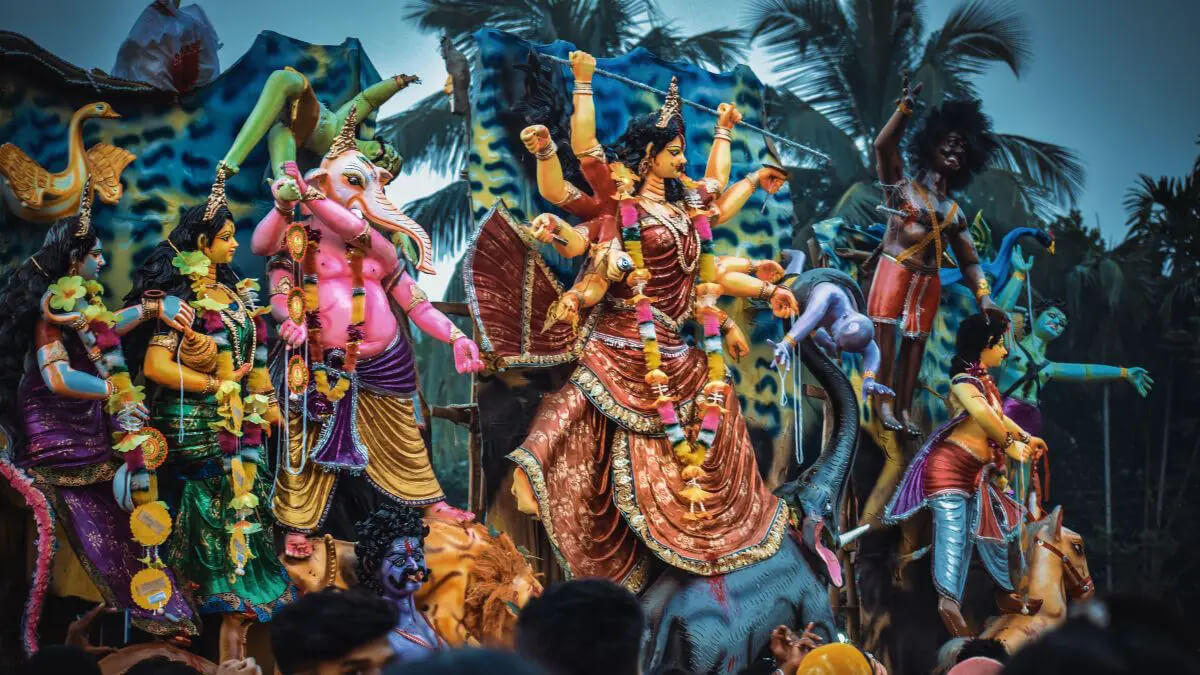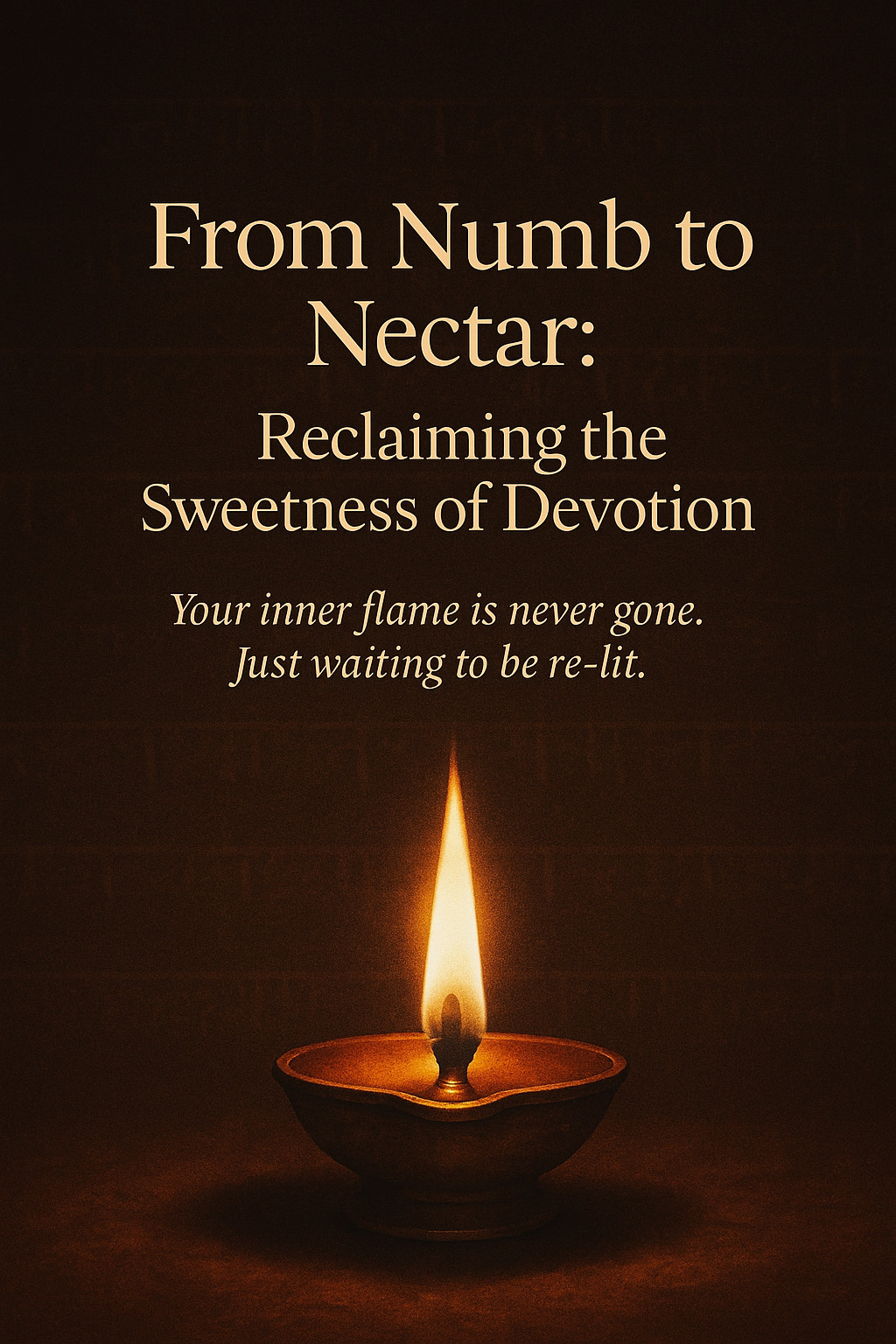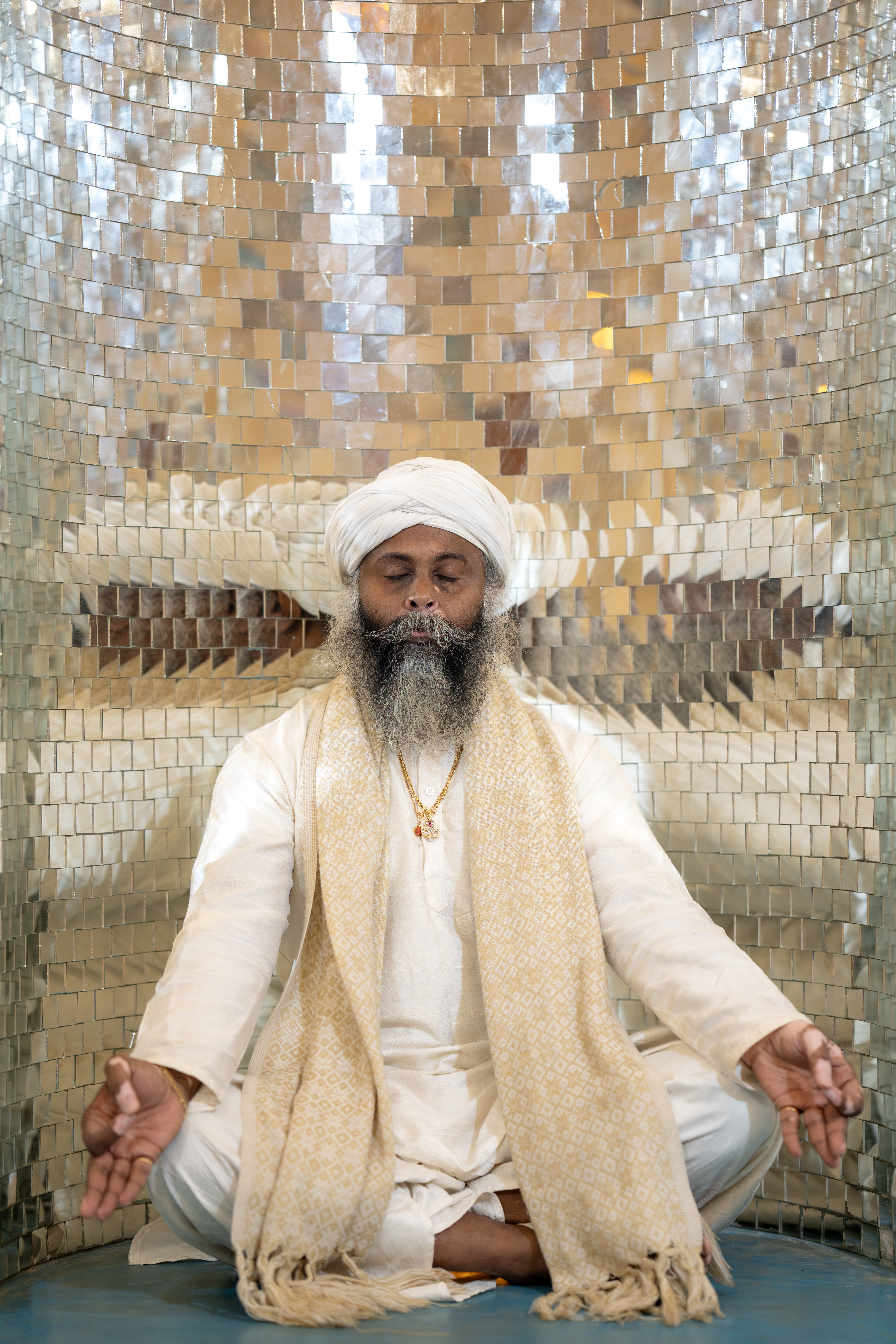Durga Puja, also known as Durgotsava, is one of the most important Hindu festivals dedicated to Goddess Durga. This festival marks the victory of good over evil, as Goddess Durga vanquished the demon Mahishasura. Celebrating Durga Puja not only involves grand decorations, music, and feasting, but also the performance of rituals, chanting of mantras, and a focus on inner spiritual connection.
Here is a detailed guide on how to celebrate Durga Puja, incorporating traditional rituals, mantras, and practices.


Preparation for Durga Puja
- Cleaning and Decoration
- Before the commencement of Durga Puja, it is important to clean the house or the space where the celebration will take place. This symbolizes purifying the surroundings for the divine presence of the goddess.
- Decorate the altar with flowers (especially marigold), lamps, and fresh fruits. Red is considered an auspicious color for the festival, so red flowers and cloths are often used.
- Setting up the Altar
- Place an idol or picture of Goddess Durga at the center of the altar. You can also install the Navapatrika (nine plants symbolizing the goddess).
- Keep essential items such as a bell, diya (lamp), kumkum (vermilion), sandalwood paste, incense sticks, a coconut, and offerings such as fruits, sweets, and water.
Durga Puja Rituals
Day 1 (Shashti): Bodhon (Invocation of the Goddess)This marks the beginning of Durga Puja. On this day, devotees invoke the goddess through the ritual of Bodhon.
- Light the lamp and incense.
- Offer fruits, sweets, and flowers.
- Chant the following mantra to invoke the Goddess:Durga Dhyan Mantra
Om Jataajuta Samaayuktamardhendu Krita Lakshanam |
Lochanyatra Sanyuktam Padebhyam tu Chaturbhujam ||(Salutations to Goddess Durga, who is adorned with a crown of matted locks, having a crescent moon on her head and four hands.)
Day 2 (Saptami): Kola Bou (Bathing the Navapatrika)
- The Navapatrika (a group of nine plants tied together) is bathed in the river, symbolizing purification. If you are celebrating at home, you can bathe a small potted plant or a bunch of leaves.
- Afterward, place the Navapatrika on the altar next to the idol of Durga and offer her worship.
Day 3 (Ashtami): Kumari Puja
- On Ashtami, Kumari Puja is performed where young girls are worshiped as the manifestation of Goddess Durga.
- Offer food, new clothes, and sweets to the girls as a sign of respect.
- Chant the following mantra while offering flowers and fruits:Ya Devi Sarva Bhuteshu Mantra
Ya Devi Sarva Bhuteshu Shakti Rupena Samsthita |
Namastasyai Namastasyai Namastasyai Namo Namah ||(Salutations to the goddess who resides in all beings as the power of the universe.)
Day 4 (Navami): Sandhi Puja
- This is considered one of the most important rituals, symbolizing the slaying of Mahishasura by Durga. Sandhi Puja is performed at the exact moment when Ashtami ends and Navami begins.
- Light 108 lamps and offer 108 lotuses, or perform the ritual with symbolic offerings.
- Chant the following mantra:Aigiri Nandini Stotram
Aigiri Nandini Nandhitha Medhini Viswa Vinodhini Nandanuthe |
Girivara Vindhya Shirodhi Nivasini Vishnu Vilasini Jishnu Nuthe ||(Salutations to the Goddess Durga, who is the daughter of the mountain and the beloved of Lord Shiva, who resides in the Vindhya Mountains and is praised by all.)
Day 5 (Dashami): Vijaya Dashami
- This marks the culmination of Durga Puja, where Goddess Durga is bid farewell. On this day, people perform the ritual of Sindoor Khela (playing with vermilion) and immerse the idol in water (visarjan), symbolizing her return to Mount Kailash.
- Chant the following farewell mantra while offering flowers:Ya Devi Sarva Bhuteshu Vishnu Mayeti Shabditaa |
Namastasyai Namastasyai Namastasyai Namo Namah ||(Salutations to the goddess who abides in all beings as Vishnu’s creative energy.)
Daily Rituals for Durga Puja
- Morning Puja:
- Light the lamp (diya) and incense every morning.
- Recite Durga Chalisa or other prayers dedicated to the goddess.
- Offer fresh flowers, fruits, sweets, and aarti (ceremonial offering of light) to the goddess.
- Evening Aarti:
- In the evening, perform aarti to the goddess by waving a lighted lamp in front of her.
- Chant Om Dum Durgaye Namah 108 times, using a mala (prayer beads) for devotion.
Mantras for Durga Puja
- Durga Gayatri Mantra
Om Girijaye Cha Vidmahe Shiva Priyaye Cha Dheemahi |
Tanno Durgih Prachodayat ||(We meditate on the daughter of the mountain, who is beloved of Lord Shiva. May Goddess Durga inspire and guide us.) - Devi Suktam (from the Rig Veda)
Ya Devi Sarva Bhuteshu Vishnu Mayeti Shabdita |
Namastasyai Namastasyai Namastasyai Namo Namah ||(Salutations to the goddess who abides in all beings as Vishnu’s creative energy.)
Fasting and Offerings
- During Durga Puja, devotees often observe fasts (vrata) for one or more days to honor the goddess. Fasting is usually done from dawn until the evening aarti, after which the devotee consumes a simple meal.
- Offerings to the goddess often include traditional sweets like modak, payasam (rice pudding), and coconut-based dishes, along with fresh fruits, water, and milk.
Celebrating Durga Puja in Modern Times
While the traditional rituals form the core of Durga Puja, it is important to also engage in other activities that honor the spirit of the festival:
- Charitable acts: Donate food, clothes, or money to those in need, as a way of embodying the compassionate and nurturing aspects of Durga.
- Meditation and reflection: Dedicate time each day to meditate on the qualities of the goddess—strength, compassion, and wisdom.
- Community celebration: Join local Durga Puja events or connect with others through virtual platforms to share the joy and devotion of the festival.
Conclusion
Durga Puja is a time of great devotion, celebration, and spiritual connection. By following these rituals, chanting mantras, and embracing the deeper significance of the festival, you invite the divine energy of Goddess Durga into your life. She represents the triumph of good over evil, the nurturing force that supports us in times of adversity, and the protector who guides us on our spiritual journey


0 Comments